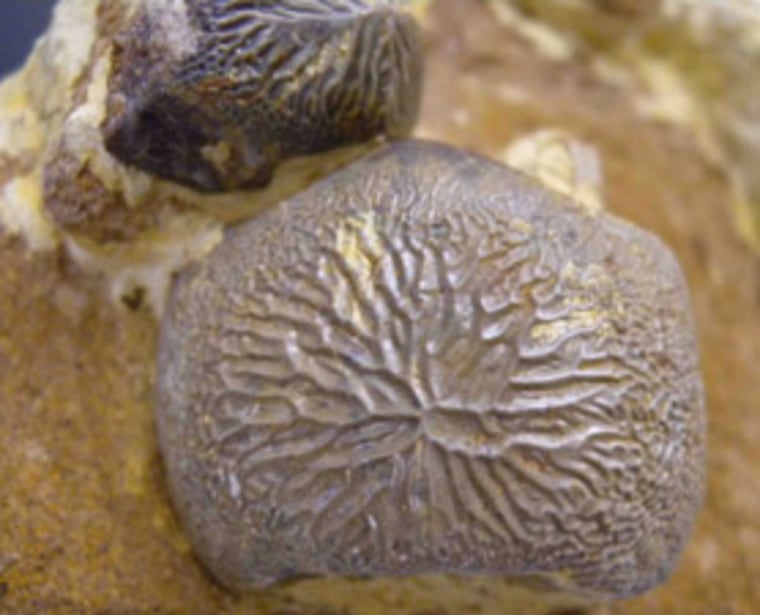Paleontologists have just identified the remains of a gigantic, 88.7-million-year-old shark nicknamed the "shell crusher." The Cretaceous species could pulverize large, shelled animals with its 1,000 teeth, suggests a new study.
A handful of other fossils for the shark, Ptychodus mortoni, had been previously found and hinted that the species was extremely big. The new discoveries support that contention and reveal the shark likely grew to at least 33 feet in length and chomped on its prey with its 3-foot-long jaw.
Its specialized teeth were just as impressive as its body size.
"Unlike 'conventional sharks,' Ptychodus mortoni possessed pavement-like upper and lower dental plates consisting of juxtaposed rows of massive teeth suited for crushing," lead author Kenshu Shimada, a research associate in paleontology at the Sternberg Museum of Natural History, told Discovery News.
"The shark could have practiced suction feeding, but larger prey, such as giant clams, would have required the shark to pick them up directly with its mouth from the bottom of the ocean floor," added Shimada, who is also an associate professor in the Environmental Science Program and Department of Biological Sciences at DePaul University.
His team identified a portion of a right upper jaw, 19 teeth and multiple oral and dermal scales for the shark, now housed at the Sternberg Museum. The scientists originally found the remains embedded in a vertical rock cliff in Kansas called the Fort Hays Limestone.
"It took pretty much the whole day to just extract the fragmentary specimen," said Shimada, "and more skeletal and dental parts of the shark are likely still present deep in the rock that we just simply cannot get to."
For example, the rock may contain additional teeth. This shark is believed to have had 1,000 in total, some of which were replacement teeth ready to be used when others fell out.
The known remains, described in a paper accepted for publication in the journal Cretaceous Research, along with prior finds suggest "Ptychodus possibly resembled the modern nurse shark, which has a broad, rounded head with a stout body."
The two sharks, however, were not closely related to each other.
During the Late Cretaceous, this shark was probably a "sluggish bottom dweller" in a seaway covering today's Kansas and other parts of North America. Based on additional remains excavated before at the site, the shark shared its marine habitat with carnivorous reptiles, such as mosasaurs and plesiosaurs, as well as fish and other sharks. At least one shark, Squalicorax, probably fed on Ptychodus.
Most of these animals had one thing in common: They were big.
"The emergence of large ptychodontids roughly coincides with the timing of when many other kinds of organisms, including clams as well as sharks and bony fishes, became bigger," said Shimada.
"Clearly the food resources must have been abundant enough in the marine ecosystem to support such large organisms," he added. "Becoming big does have advantages, such as deterring predators and being able to travel faster, but it does come with disadvantages as well, most notably needing more food for energy."
"Ptychodus is a fascinating beast, and it is clear that it reached vast sizes," Charlie Underwood, a University of London paleontologist, told Discovery News.
Vastness is a relative concept, however, in terms of Cretaceous Era animals.
"Bear in mind that the specimen (described by Shimada's team) is far from the largest, as there are isolated teeth known that are a lot larger still," Underwood said.
